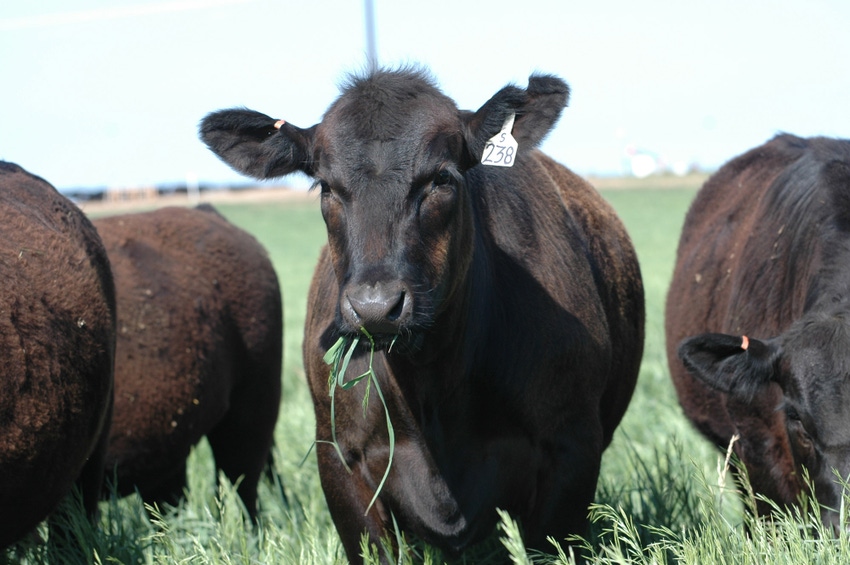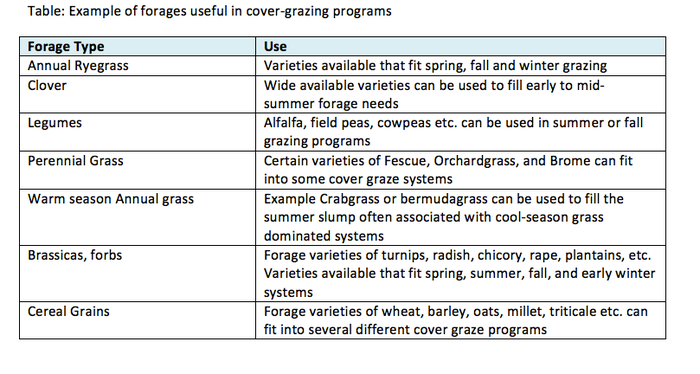Food plots aren’t just for wildlife
While ranchers who lease the hunting have learned the value of food plots to enhancing that enterprise, the same concept works with enhancing the sustainability of your cattle enterprise.
March 14, 2017

The wildlife community has learned the value of food plots in their management efforts. Hunting ranches increasingly use food plots, or areas strategically planted to forage to fill nutritional gaps for game during key periods of stress, in order to maintain healthy game populations. Since hunting has become big business, maintaining healthy populations of game makes good financial sense.
Even ranches that don’t currently have a hunting enterprise can benefit from the strategy of providing food plots targeted for the cowherd. Just as providing access to winter feed is one of the greatest challenges for the game manager, providing winter feed to the cowherd is the greatest challenge to the ranch manager, and has a big impact on profitability.
A food plot is an area within a management range that is planted to a variety of forages that are provided to game, usually deer, pheasant or turkey, so they have a ready source of feed during times of otherwise limited forage availability. Basically, the concept is applying the ideas found in cover-cropping, which is rapidly growing in the farm community, to the idea of providing forage resources to a game management area.
Many of the same grasses, clovers, legumes, brassicas and other forages that are used by farmers for cover crops are used for food plots, except instead of a focus on protecting and increasing soil health, the idea of food plots is concerned with providing forage availability.
Food plots are usually planted using no-till, minimal till or even broadcast planting methods, greatly increasing the range of application. Most food plot seed mixes use components that are readily available to ranchers from major seed companies.
Forages like annual ryegrass, forage radishes, forage turnips, chicory, forage rape, various types of clovers, certain perennial grasses, legumes including alfalfa, and forage cereal grains can be used to provide a forage source for grazing.

The basic concept of food plots is not new. What’s new is applying the ideas developed by the cover-crop community and used by the game ranching industry to the cow-calf or stocker sectors. The game industry has discovered the financial benefit of food plots, which is something that more in the cattle industry are also realizing.
Many low-cost producers are already implementing the idea of “food plots” to provide forage to their herd during times of otherwise low forage availability, usually either during the transition time between fall/winter, or during the summer slump timeframe. However, with enough forward planning, and proper management, a system can be designed to provide forage during any season of the year, greatly contributing to the practice of 360-day grazing.
Fortunately for the ranching industry, more seed companies have focused on providing seed resources needed to develop grazing programs to fill forage gaps. The most progressive seed companies have developed entire programs around the concept of filling forage gaps.
Ranchers looking to minimize feed cost by implementing grazing strategies focused on year-round grazing opportunities, and filling forage gaps, have more access to resources, experts and greater available seed sources. This allows a ranch to minimize feed costs by providing greater grazing opportunities for their herds. By minimizing a ranch’s reliance on harvested feed, an enterprise is able to minimize cost and increase profitability, which is a key component of sustainability.
Weech is a consultant and adviser on sustainable agricultural projects. Contact him at [email protected].
About the Author(s)
You May Also Like



